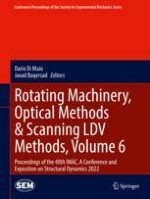2023 | OriginalPaper | Buchkapitel
4. Neuromorphic Data Processing for Event-Driven Imagery for Acoustic Measurements
verfasst von : Kevin Zheng, Jack Sorensen, Celeste DeVilliers, Alessandro Cattaneo, Fernando Moreu, Gregory Taylor, David Mascareñas
Erschienen in: Rotating Machinery, Optical Methods & Scanning LDV Methods, Volume 6
Aktivieren Sie unsere intelligente Suche, um passende Fachinhalte oder Patente zu finden.
Wählen Sie Textabschnitte aus um mit Künstlicher Intelligenz passenden Patente zu finden. powered by
Markieren Sie Textabschnitte, um KI-gestützt weitere passende Inhalte zu finden. powered by
